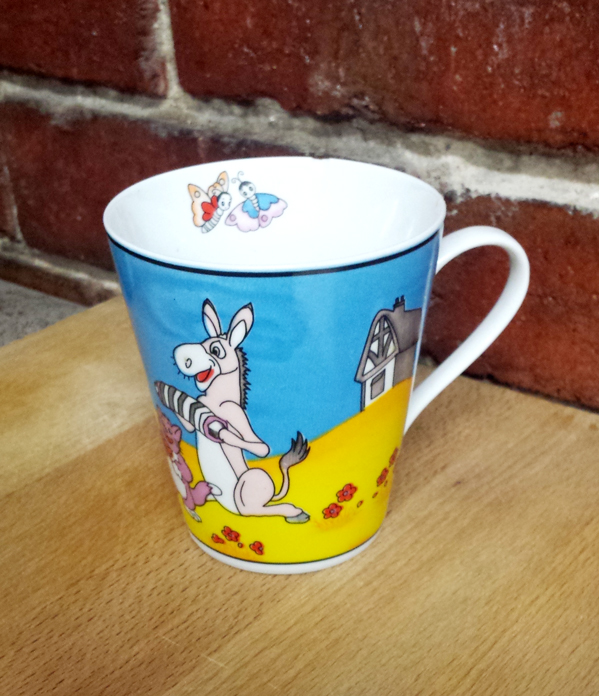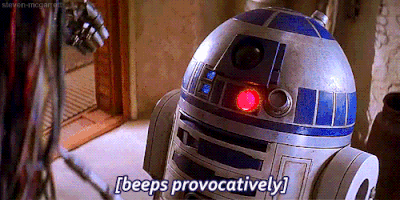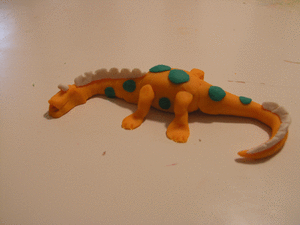Raising a mug to Link Festival 2016: reflecting on inspiration and creativity.
- |
- |

When I first sat down to write a wrap up of Link Festival 2016, also known as LinkFest, I struggled to summarise what had just unfurled before me.
I left LinkFest with an overwhelming feeling of gratitude and inspiration. For those who attended, you’ll know what I mean. For those who didn’t attend, you’re lucky—there’s one object that perfectly articulates the experience of attending LinkFest.
The percolation of ideas, the stimulating discussion, the hot topics, the fluid concepts, the… caffeine.
I would like to introduce you to my friend, Doug the mug. Sourced from an op-shop of course. LinkFest is a festival of sustainability and social good after all.

Doug the mug, the defining artefact of Link Festival 2016.
Doug was thrust upon me by a smiling volunteer on the first morning of LinkFest.
For me, Doug captures the ethos of LinkFest. It symbolises meetings held over similar vessels for the sharing of ideas; thoughtful conversations while sipping chai; heated debate on behaviour change; and a quiet moment of solace taken with a green tea afterward.
Plus, this was my second year attending LinkFest, so Doug represented a homecoming. And what an eye-opening homecoming it would prove to be. Just as if I’d had too much coffee from my mug of metaphors.
The festival of homecoming.
LinkFest is a two-day event created to inspire and catalyse designers, engineers, architects, and students to use their skills for good. It encourages people to drive social change through innovation. It’s a vibrant collision: the coming together of an eclectic community, all excited to explore the intersections of design, technology and social change.
Jayde Harding—from experience design agency Wildwon—led the festival alongside Engineers Without Borders. Early on, it was shared that the underlying theme of the event was ‘divergence and the emergence of ideas, innovations, inventions, systems and creativity’.
I was immediately excited about seeing each of the presenters to learn more about how they happen upon their brightest ideas. What inspires them?
A lot, as it turns out. A broad range of impulses.
For Dr Jordan Nguyen, Biomedical Engineer and Social Entrepreneur, it’s the process of ‘making and breaking’. UX luminary and sensory designer Alastair Somerville finds inspiration in understanding human senses. Kyra Maya Phillips, author of The Misfit Economy likes to take cues from those on ‘the fringe’, while Pamela Hartigan feels that ‘entrepreneuring’ should be a verb and sees the ‘unreasonable man’ as an innovator.
What does that all mean? Let’s find out.
Taking a robotic approach.
As a technologist, entrepreneur, innovator and tournament tennis player, Dr. Jordan Nguyen is a pretty varied individual. Fittingly, he draws inspiration from an equally diverse range of sources: from real life experiences, nature—a process he refers to as the ‘biomimicry of design’—, and from science fiction movies.
That last one might sound like a strange source of inspiration, but sci-fi movies are a fertile ground for one of Jordan’s main interests—robots.

They are a key source of inspiration because robots aren’t afraid of failure. Throughout his discussion, Jordan suggested that humans could learn from the robotic approach. Aside from the fact that we should be more courageous, we should be inventing, hacking, making, and breaking like our cyborg brethren. By adopting a similar approach, Jordan has been involved in some amazing projects.
After diving into a pool, injuring his head, and experiencing temporary paralysis as a child, Jordan was inspired to develop the mind control wheelchair in 2006. The device works by amplifying brainwave signals to draw electrical energy from the brain and control the chair. The initial concept was drawn from a horse wearing blinkers, with nature providing a solid blueprint for biomimicry.
As it turns out, programming with the human brain is quite difficult. After experiencing several challenges and more than a few hurdles, Jordan decided to take a robotic approach. Freed of the fear of failure, he innovated, made, broke, rebuilt, and tinkered. Eventually, he learned about ‘filters’—a discovery that enabled his successful completion of the project.
Currently in development for commercial release, Jordan’s personal breakthrough could represent an enormous breakthrough for people with severe disabilities. And it’s all thanks to the convergence of nature and robots. Inspiration can take any and many forms.
Information Theory + sensory design.
Alastair Somerville is a sensory designer who has dedicated his life to interpreting the relationship between sensory perception and cognition. Known as a ‘sensory guru’, Alastair combines practical experience from work in accessibility projects with emerging research in neuroplasticity and cognition.
In his informative workshop, we discussed the idea that users create meaning. Without a user, there is no context, no understanding and no meaning. Alastair hypothesises: if you look at a normal interaction between two people, the significance of the interaction is in the transfer of knowledge. The interaction occurs as each party develops understanding.
This is the basic premise of Information Theory, or that outward communication must have a return communication in order to be meaningful.
The story of Play-Doh represents Information Theory perfectly. Play-Doh, the bizarre, brightly colored, salty dough that many of us grew up moulding (and, occasionally, nibbling), was invented in the 1930s by a soap manufacturer. The founders of Play-Doh originally created the material as a wallpaper cleaner.
Although Play-Doh had been in production for 20 years, it wasn’t until founder Cleo McVicker’s son started playing with the goop that inspiration, purpose and, ultimately meaning, struck. In doing so, he forever repurposed the dough as a toy for the young and young at heart.

This particular user created a dragon.
This alludes to the idea that user interaction creates meaning. By interacting with, understanding, and successfully manipulating a platform, system, or product, users create meaning for themselves.
Simplicity is best when trying to establish meaning. Although our senses may be complex, they are most effectively aroused by simple stimuli. A formless mass of goo for example.
Effective sensory design involves understanding the complexity of sensory impulses and using design techniques to make interactions feel simple. Even when they aren’t. For more on the value of making the complex feel simple, read this article by one of our copywriters here at August, Elliott Grigg.
Innovative misfits.
Kyra Maya Phillips finds inspiration in understanding ideas: how they’re formed, enacted, and what makes them come to life. As the author of the Misfit Economy, she set out to understand what Somali pirates, copycats, terrorists, computer hackers, and inner city gangs have in common with Silicon Valley. The answer? Surprisingly, it’s innovation.
Kyra is passionate about understanding people that sit on the fringes of society. Those in the nooks and cracks with the instinct required to spot problems, identify opportunities, to solve them and, ultimately, create.
She says:
‘Across the globe, diverse innovators operating in the black and grey economies are developing solutions to a myriad of challenges. Far from being ‘deviant entrepreneurs’ that pose threats to our social and economic stability, these innovators display remarkable ingenuity, pioneering original methods and best practices that we can learn from and apply in our own worlds.’
Kyra’s presentation identified a handful of misfit personas we can all learn from to help improve our creativity and hone our culture. I will share two.
The copycat.
Let’s face it: copycats have a bad rep. In Australia, we have laws to protect our ideas and innovations from copycats. I have distinct memories of my classmates being scolded for copying other student’s tests. But these kids, the copiers, grow up to be the inventors of video download streaming services like Limewire, or the talented producers of replica Louis Vuitton handbags.
In China, copycat culture is accepted. The Guandong region alone is home to 22 fake Apple stores. In many cases, the copycats have done such a good job that the employees believe they actually work for Apple.
These copycats are looking for the secrets to success, to find the components that come together to form such an effective pattern or outcome. Here, Kyra announced that ‘combination is the essence of creativity’.
Steve Jobs tended to agree—famously quipping:
‘Creativity is just connecting things. When you ask creative people how they did something they feel guilty because they didn’t do it, they just saw something. It seemed obvious to them after a while.’
The resourceful man.
Those of us that can maximise our resources are likely to find success. Duane Jackson is the definition of a resourceful man. Growing up in a children’s home in East London, he had an admittedly rocky childhood. Despite the difficulties, he found an old computer which he reassembled and taught himself to code on.
Although he was taking promising steps in self-education, Duane’s formal schooling was a different story. At the age of 15 he was kicked out of school, with one of his early teachers commenting Duane was on track to become either ‘a master criminal, or amazingly successfully in business’. This would prove an accurate call.
Just a few years later, at age 19, Duane was arrested for attempting to smuggle 6,500 ecstasy pills across the US border. He was sentenced to spend more than two years in jail.
Duane sees the ‘quiet time’ he had in prison as the catalyst for his career. He used his time in prison to hone his skills in programming and software development. Learning to code in prison wasn’t easy, especially given that Duane had no access to a computer. Instead, with a knack for being resourceful, he would write out code on pieces of paper. Later he would post these notes to a friend, who would code up Duane’s ideas. The pair would then debug things over the phone.
When he left prison, Duane put his knowledge and skills to use, launching KashFlow – the first ‘software as a service’ accounting platform. Kashflow has been pioneering in many ways, paving the way for online software with API integrations: an approach that has been taken up by the likes of PayPal, MailChimp and DropBox.
There are two key learnings in this story that we can apply to our own lives:
- To enjoy an effective creative process, we need to give ourselves the ability to indulge in ‘sit and think’ time.
- To be resourceful you must make the most of what you have in every scenario. Duane has a life motto that sums things up nicely:
‘Make do with what you have. Not ‘what should I do?’ But, ‘what could I do with what I have available?’
From ‘entrepreneur’ to ‘entrepreneuring’.
I’m going to follow Duane’s advice and be resourceful in this segue, linking that very idea—resourcefulness—to Pamela Hartigan’s discussion. She started with a key quote about the entrepreneurial spirit, noting that all successful entrepreneurs are not only incredibly resourceful, but resolute too.
On an entrepreneurs journey, many friends and family will often reject their ideas and concepts. Repeatedly.
The idea for Pamela’s talk came from George Bernard Shaw‘s quote:
‘The reasonable man adapts himself to the world; the unreasonable one persists in trying to adapt the world to himself. Therefore, all progress depends on the unreasonable man.’
Through their persistence, entrepreneurs are ‘unreasonable’. They’re exceptional—they take risks, they have an innate stubbornness, and they refuse to take ‘no’ for an answer. They’re out to change the world.
However, Pamela was very careful not to spend too much time valorising the idea of the ‘entrepreneur as hero’. She argues that we should adopt a more realistic appreciation for teams, for supportive and innovative ecosystems. Many entrepreneurs rely on the creativity and strategy of a team. In the same way that an idea is nothing without execution, a bright spark won’t catch alight unless there’s the fuel to support it.
Pamela suggested that we evolve our thinking and become more active and inclusive: celebrate ‘entrepreneuring’ rather than the singular ‘entrepreneur’. This way, we appreciate that ‘entrepreneuring’ is an activity, it’s a verb. This is something that can be learned, crafted and honed. It is also an action, meaning that you have to act and that these activities are created by people rather than a way of defining a personality.
If we see entrepreneurship as a group activity involved in making change, we can apply the term to teams and we are less contingent on the singular person: the ‘heropreneur’.
The unreasonable man shouldn’t be singular. Collectively, we can all be active in finding our inner ‘unreasonable man or woman’.
***
So there you have it, two incredible days encompassing a broad range of inspiring topics. I hope somewhere in this article there was a nugget of truth that resonated with you—a handy chunk of wisdom or insight. For those who attended, I would be keen to chat about your favourite presenter and what you learned. Have your say in the comments below.
With the event done and dusted, my mug will serve as an ongoing daily reminder of the power of innovative thinking. Because, when it comes to innovative thought and engaging ideas, LinkFest will leave your mug running over.
I’ve certainly got enough to keep me going until next year’s event. I hope I’ll see you there!
More Articles
Up for some more?
Get your monthly fix of August happenings and our curated Super8 delivered straight to your inbox.
Thanks for signing up.
Stay tuned, the next one isn't far away.
Return to the blog.
